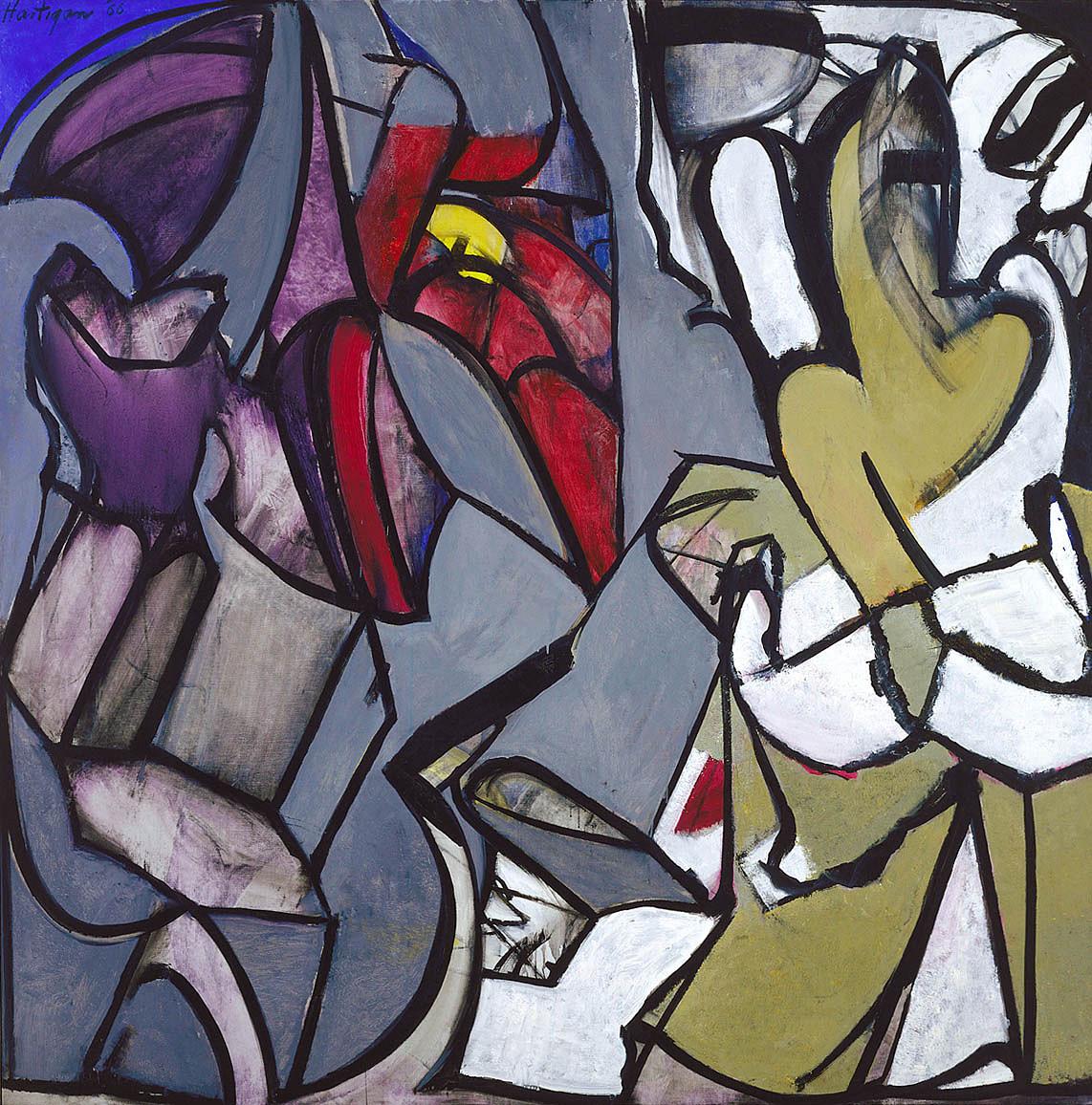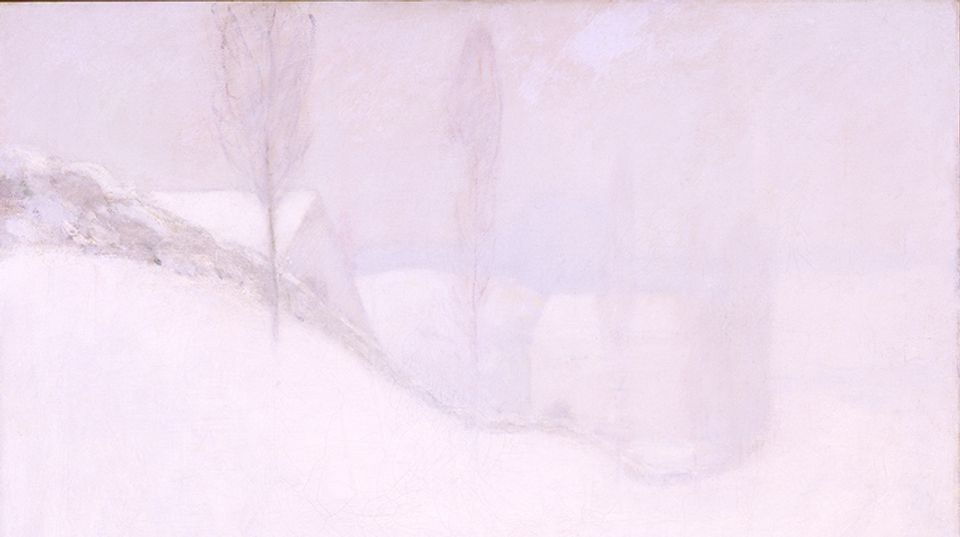Grace Hartigan and Frank O’Hara became friends in the early 1950s amid the hothouse atmosphere of New York’s downtown art scene when it was still tiny and centered around grubby watering holes like the Cedar Tavern. During those years they were close confidantes and discovered their individual styles within painting and poetry, respectively. Both were artists of modern life, capturing the fleeting thoughts and images of everyday experience in their work. For Hartigan, the introduction of recognizable content into her painting was a bold move, given the reverence for pure abstraction among the New York School of painters. Her attraction to what she saw as the “confessional” quality of O’Hara’s writing may have encouraged her own turn toward the personal and referential.
Although O’Hara was gay and Hartigan straight, their relationship followed the arc of a love affair, flaming intensely before burning out. O’Hara’s “For Grace, After a Party” was one of many poems he dedicated to Hartigan in the 1950s, its intimate tone pointing to their emotional closeness at that time. Hartigan broke off the relationship in 1960, when she left New York to start a new marriage and life in Baltimore. The two didn’t speak for several years and had not entirely reconciled when O’Hara was killed in an accident in 1966. Not long after, Hartigan painted Frank O’Hara, 1926–1966 as a memorial to her old friend. In it, a tan and white abstracted figure strides into a field of churning, shifting forms, perhaps alluding to the vivid and dynamic life O’Hara had led.
For Grace, After A Party:
Frank O’Hara From Meditations in an Emergency, copyright © 1957 by Frank O’Hara. Used by permission of Grove/Atlantic, Inc.
Based on text created for SAAM’s special exhibition Artist to Artist that features paired artworks, each representing two figures whose trajectories intersected at a creatively crucial moment, whether as student and teacher, professional allies, or friends. Howard Kaplan contributed to this story.


















